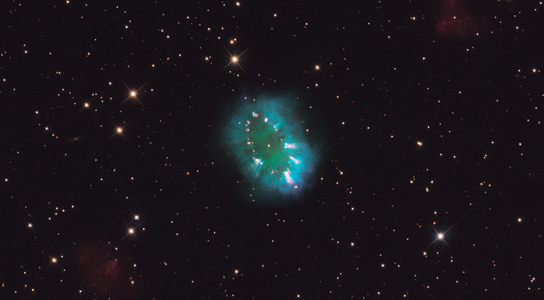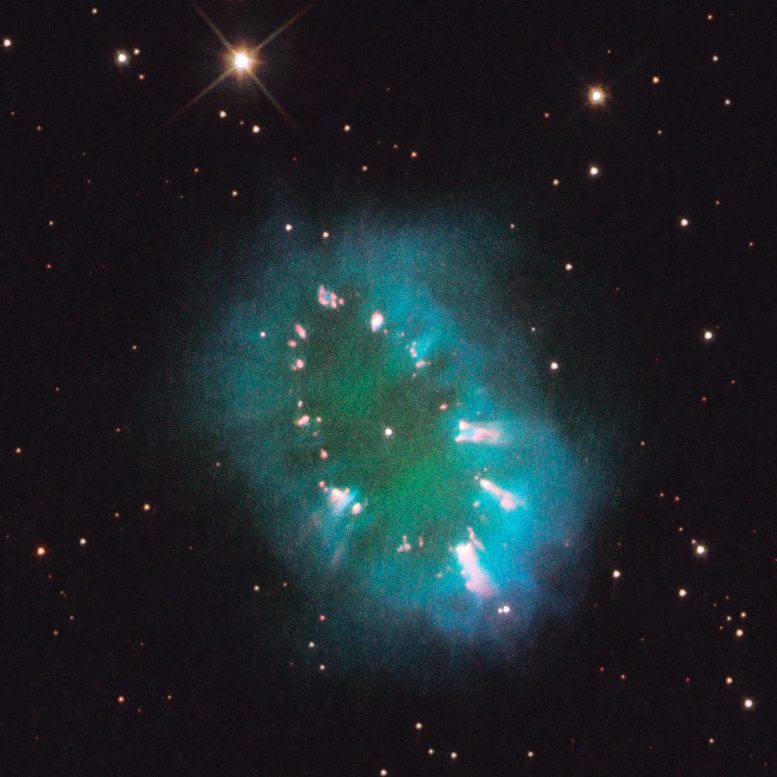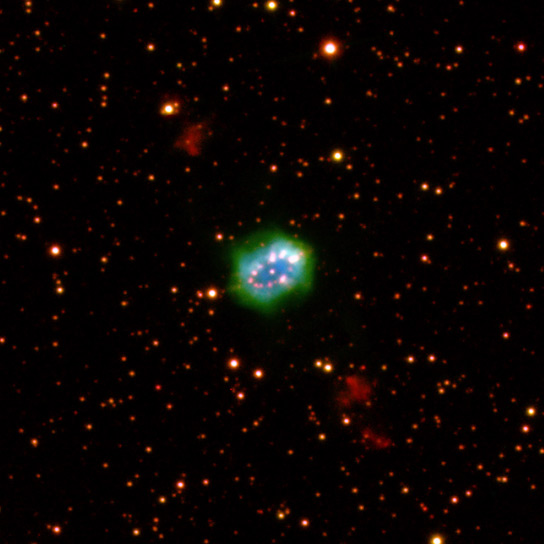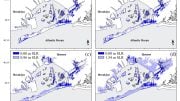
The Necklace Nebula (PN G054.2-03.4) is a planetary nebula found in the northern constellation Sagitta, approximately 15,000 light-years distant.
The Necklace Nebula (PN G054.2-03.4) is a planetary nebula situated in the northern constellation Sagitta, and is located about 15,000 light-years away. It was first discovered by the Isaac Newton Telescope Photometric H-alpha Survey (IPHAS) in 2005. The mission is ground-based and focused on the North Galactic Plane.
These composite images were taken by the NASA Hubble Space Telescope. The object surrounds the glowing remains of a Sol-like star and consists of a bright ring measuring 2.04 light-years across, dotted with dense, bright knots of gas that look like pearls or diamonds in a necklace. The knots grow brightly due to the absorption of UV light from the central stars.

Binary stars orbiting very closely together produced the nebula 10,000 years ago. One of the aging stars ballooned and enveloped its companion star. This caused the larger star to spin so quickly that its gaseous envelope extended into space. Due to the centrifugal force, most of the gas escaped along the star’s equator, producing the dense ring seen in the composite images.

The bright knots are embedded and are the densest gas clumps in the ring. The stars were whirling around each other in 1.2 days. The image was captured by Hubble’s Wide Field Camera 3. It showcases the glow of hydrogen, in blue, oxygen in green, and nitrogen in red.









Be the first to comment on "Images of the Necklace Nebula"